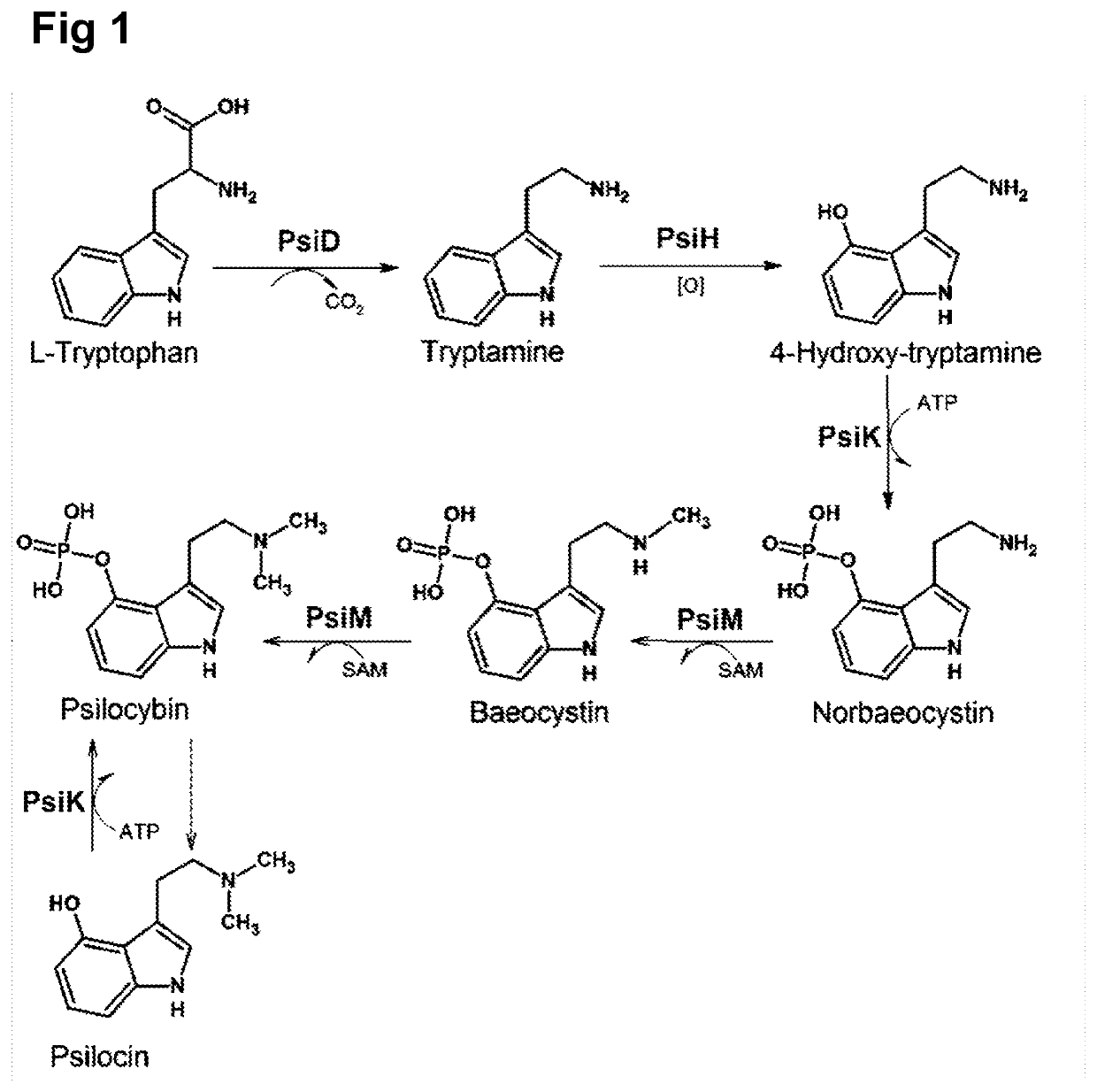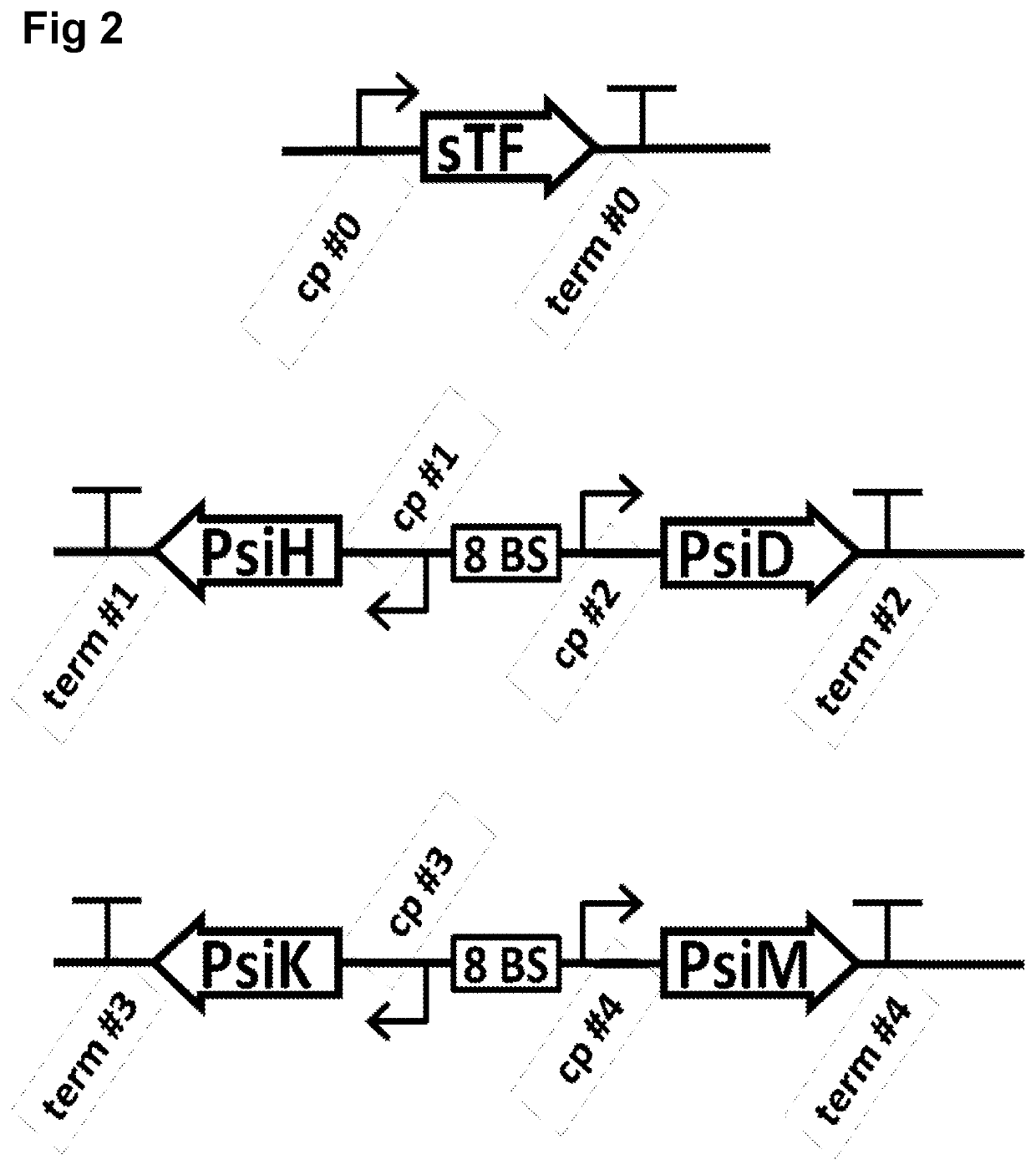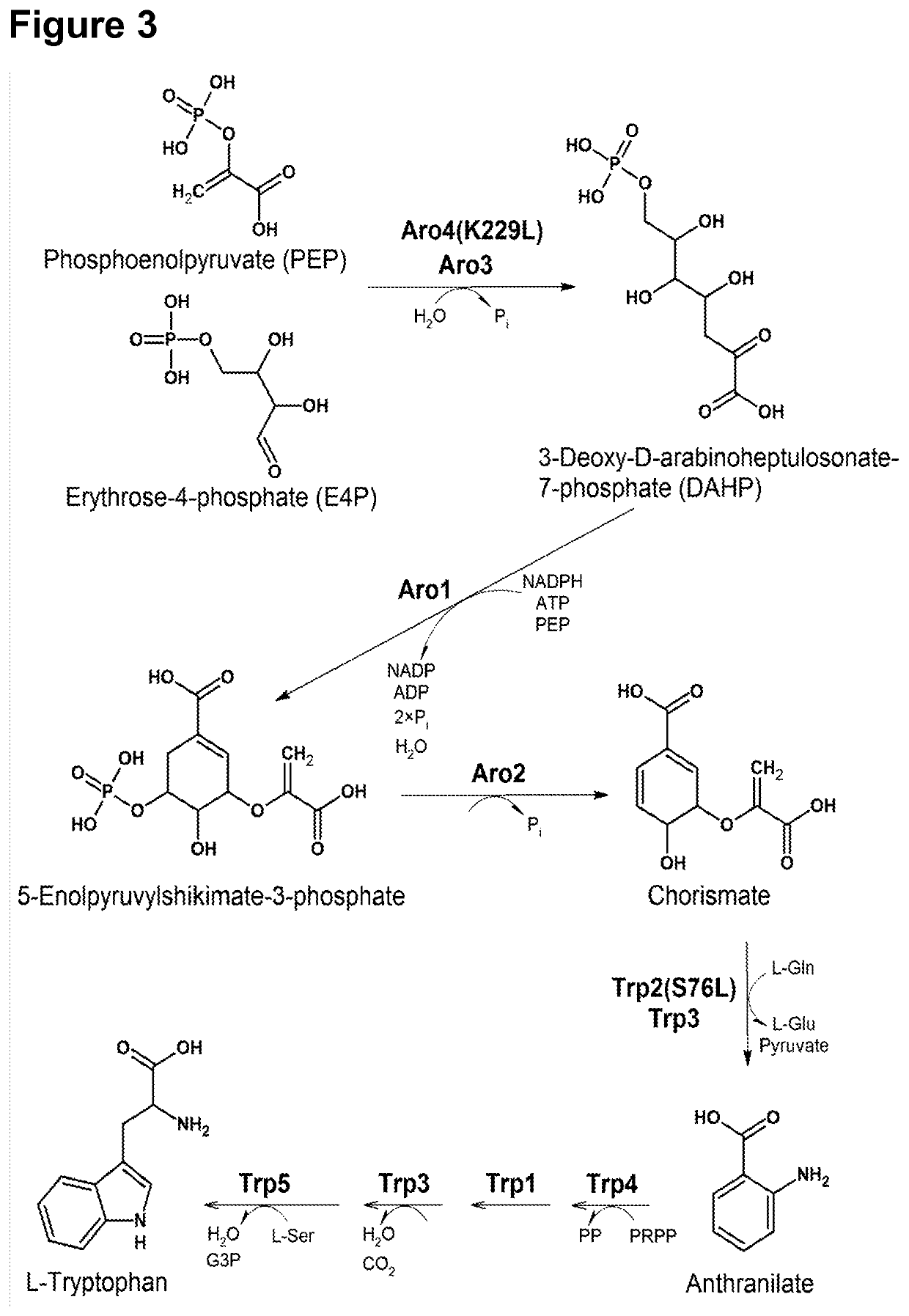Heterologous production of psilocybin
a production system and psilocybin technology, applied in the direction of enzymology, peptide/protein ingredients, transferases, etc., can solve the problems of toxic waste accumulation, inconvenient control, inefficient and unenvironmental friendly,
- Summary
- Abstract
- Description
- Claims
- Application Information
AI Technical Summary
Benefits of technology
Problems solved by technology
Method used
Image
Examples
example 1
ion of Saccharomyces cerevisiae Platform Strains with Elevated Metabolic Flux Towards L-Tryptophan
[0223]The expression cassette for the sTF (FIG. 4) contained the S. cerevisiae TDH3 core promoter (cp #0) and the URA3 terminator (term #0). The sTF gene was encoding a fusion protein composed of the Bm3R1 coding region (NCBI Reference Sequence: WP_013083972.1), SV40 NLS, and the transcription activation domain VP16. This cassette was integrated into the ura2-52 locus of the parental strain—Saccharomyces cerevisiae CEN.PK (MATa, ura3-52 leu2-3_112 his3Δ1 MAL2-8C SUC2), forming the Sc-sTF-background-strain.
[0224]The Sc-sTF-background-strain was modified further by integration of the 2BS_ARO4_K229L cassette (FIG. 4). This cassette was integrated into the ARO4 genomic locus such way it replaced the native ARO4 gene and part of its promoter (region −113 to −1 bp counted in respect to ATG-start codon). The 2BS_ARO4_K229L cassette integrated in the genome contained a synthetic promoter, 2BS_1...
example 2
ion of Aspergillus niger Platform Strains with Elevated Metabolic Flux Towards L-Tryptophan
[0230]The expression cassette for the sTF (FIG. 4) is containing the A. niger 008 core promoter (cp #0 in FIG. 4) and the T. reesei TEF1 terminator (term #0 in FIG. 4). The sTF gene is encoding a fusion protein composed of the Bm3R1 coding region (NCBI Reference Sequence: WP_013083972.1), SV40 NLS, and the transcription activation domain VP16. This cassette is integrated into the gluC (JGI protein ID 1220513) genomic locus of the parental strain—Aspergillus niger ATCC1015 (pyrG-delta), forming the An-sTF-background-strain.
[0231]The An-sTF-background-strain is modified further by integration of the 2BS_ARO4_K219L cassette (analogous to 2BS_ARO4_K229L cassette in FIG. 4). This cassette is integrated into the aro4 (JGI protein ID 1181493) genomic locus such way it replaces the native gene and part of its promoter (region −500 to −1 bp counted in respect to ATG-start codon). The 2BS_ARO4_K219L cas...
example 3
ion of Psilocybin-Producing Saccharomyces cerevisiae Strains, and Analysis of Psilocybin Production
[0234]The PsiH-PsiD expression cassettes (FIG. 2) were constructed each containing a bidirectional synthetic promoter 114cp_8 BS_201 cp (Table 1), the PDC5 terminator for the PsiH gene (term #1 in FIG. 2), and the LEU2 terminator for the PsiD gene (term #2 in FIG. 2). The PsiH-gene DNA was encoding either the PsiH of Psilocybe cubensis origin (SEQ ID: 5) or the PsiH of Psilocybe cyanescens origin (SEQ ID: 6), the PsiD-gene DNA was encoding either the PsiD of Psilocybe cubensis origin (SEQ ID: 1) or the PsiD of Psilocybe cyanescens origin (SEQ ID: 2). All combinations were constructed resulting in four different PsiH-PsiD cassettes. The PsiK-PsiM expression cassettes (FIG. 2) were constructed analogously, each containing the bidirectional synthetic promoter 114cp_8 BS_201 cp (Table 1), the PDC5 terminator for the PsiK gene (term #3 in FIG. 2), and the HIS3 terminator for the PsiM gene (...
PUM
| Property | Measurement | Unit |
|---|---|---|
| flow rate | aaaaa | aaaaa |
| temperature | aaaaa | aaaaa |
| temperature | aaaaa | aaaaa |
Abstract
Description
Claims
Application Information
 Login to View More
Login to View More - R&D
- Intellectual Property
- Life Sciences
- Materials
- Tech Scout
- Unparalleled Data Quality
- Higher Quality Content
- 60% Fewer Hallucinations
Browse by: Latest US Patents, China's latest patents, Technical Efficacy Thesaurus, Application Domain, Technology Topic, Popular Technical Reports.
© 2025 PatSnap. All rights reserved.Legal|Privacy policy|Modern Slavery Act Transparency Statement|Sitemap|About US| Contact US: help@patsnap.com



